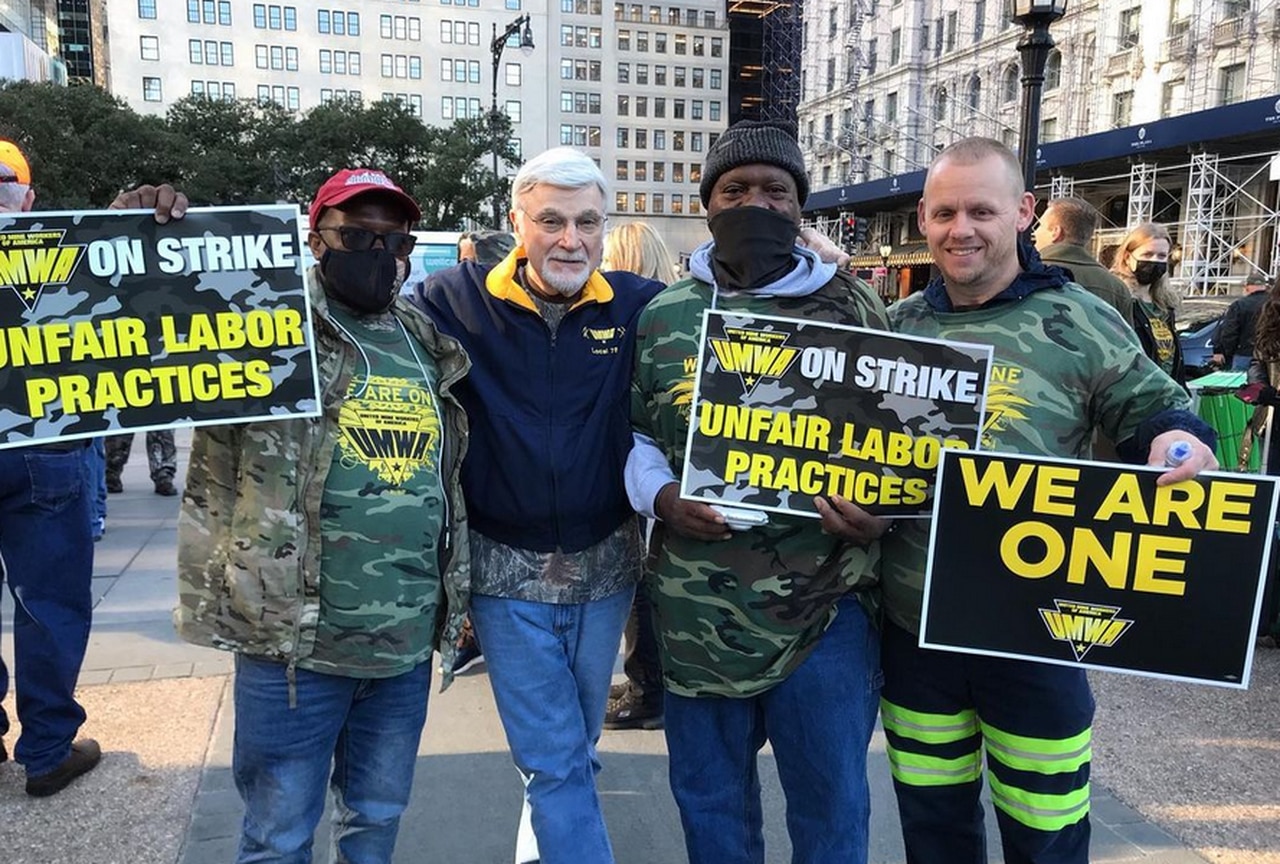Warrior Met Coal Strike Drags on After 16 Months

By William Thornton
September 22, 2022 - It’s been 540 days since union members at Warrior Met Coal’s Brookwood mines went on strike.
While the ongoing Tuscaloosa County work stoppage is believed to be the longest strike in Alabama history, the question of when it may finally end continues to remain murky.
And historians of American labor history say its unclear what may eventually resolve the strike.

Members of the United Mine Workers of America are marching in New York City Thursday, Nov. 4, 2021, in support of the ongoing strike against Warrior Met Coal in Alabama.
“It’s unusual enough that I don’t think there’s a typical path (toward ending the strike),” said Gabriel Winant, an assistant professor of history at the University of Chicago. Winant authored “The Next Shift,” about economic activity that came after manufacturing in “Rust Belt” cities.
“It’s certainly not the norm. It typically tells you the employer has really dug in their heels for one reason or another.”
Members of the United Mine Workers of America (UMWA) began a strike against Warrior Met Coal back on April 1, 2021.
About 1,100 workers took part in the initial walkout, striking for better pay and benefits that they say were part of an earlier contract negotiated under Warrior Met’s corporate predecessor.
According to the union, concessions to keep the company afloat were not restored in subsequent contract offers.
The union overwhelmingly voted down a tentative offer made a few weeks into the walkout, and the strike continues to this day. An estimated 900 miners are still taking part.
Warrior Met earlier this year said it had put forward eight full written proposals for a new contract and offered a 10% to 12% raise. Union leaders countered that the eight proposals were virtually indistinguishable from the tentative agreement voted down.
Winant said the strike has several factors that have contributed to its duration.
One is the relative size of the company, and the number of workers on strike. Another is that it’s taking place in Alabama - a deeply conservative state with right-to-work laws.
“It would be one thing if it were a giant company or a huge workplace,” he said. “A company like Warrior Met, it’s not obvious that it’s going to generate enough pressure on anyone, either economic or political, to generate an intervention.”
Back in 1946, for example, the UMWA staged an eight-month strike involving 400,000 miners nationally. President Harry Truman eventually stepped in and placed the mines under the control of the federal government, which eventually led to its resolution.
A similar national strike in 1959 involving 500,000 steel workers lasted 116 days and involved federal mediation.
Perhaps the most famous state intervention into an Alabama mining strike came in 1908, when the UMWA began one that encompassed about 10,000 miners in the Birmingham area.
More than a month into the strike, Gov. B.B. Comer ordered guardsmen to cut down miners’ tent encampments, on charges of race mixing. The strike broke soon after.
Last year, the union called attention to the use of the Highway Patrol Division of the Alabama Law Enforcement Agency along the picket line to escort workers onto the property, saying it “just looks like they’re working for the company.”
ALEA said in a statement at the time that it was in response to safety concerns.
Last October, a Tuscaloosa County circuit judge issued a restraining order against picket line activity at 12 different locations owned by Warrior Met Coal, after the company issued a statement saying the level of violence taking place along the picket line in Tuscaloosa County in the strike had “reached a dangerous level.”
Winant said injunctions limiting picketing activity are not uncommon, but it does complicate the ability of unions to put pressure on companies during strikes.
A typical counter response from a union would be to move the picket in another direction - to shareholders, for example.
Three different times in the past year, UMWA members have protested at the Manhattan offices of BlackRock, the largest shareholder in Warrior Met Coal. Union members also testified before the Senate Budget Committee to bring attention to the strike.
“It’s not obvious what a next step could be,” Winant said.
Michael Innis-Jimenez, a professor of American Studies at the University of Alabama, said the strike is probably the longest running in Alabama history.
“I haven’t seen anything that comes close to this,” he said. “The one reason I can see the company holding out is that this is not life or death for them.”
A year ago, Warrior Met in the second quarter of 2021 reported a net loss of $4.7 million.
But a year later, it posted a net income for the second quarter of 2022 of $297 million, its third consecutive quarter of record income.
That’s against business interruption expenses of $6.3 million directly attributable to the strike during the quarter, and idle mine expenses of $1.7 million.
The union won a victory of sorts this week when the National Labor Relations Board revised a previous damage assessment downward, from $13.3 million to $435,000.
There’s also the pending disposition of cases against the company for bad faith bargaining and refusal to furnish information during the strike.
“I’ve really been impressed by the tenacity of the workers,” Winant said. “I’m sure there are moments where they’ve felt demoralized, but to have kept it up is amazing. I hope they feel proud of themselves. I hope they understand that people do see that.”

